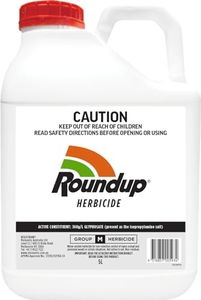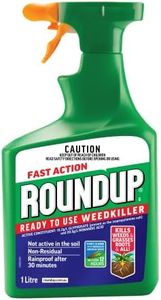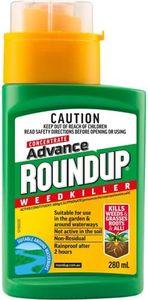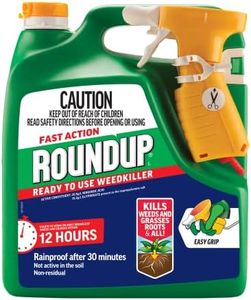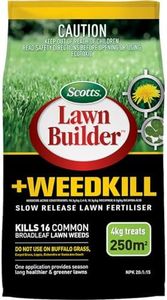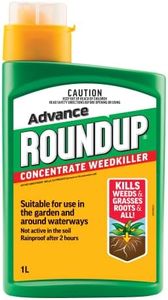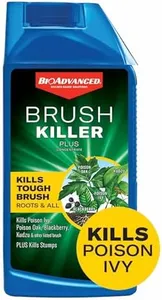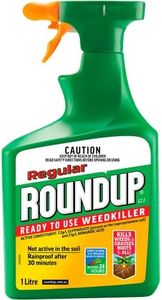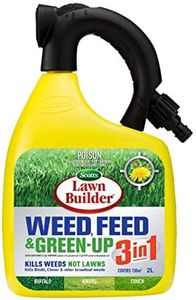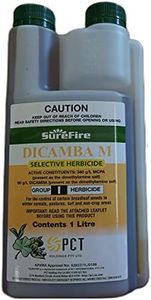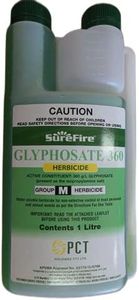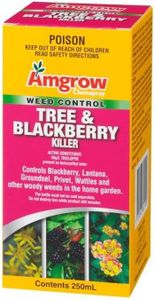We Use CookiesWe use cookies to enhance the security, performance,
functionality and for analytical and promotional activities. By continuing to browse this site you
are agreeing to our privacy policy
10 Best Weed Killers
From leading brands and best sellers available on the web.Buying Guide for the Best Weed Killers
Choosing the best weed killer is all about matching the product to your needs, the area you want to treat, and the type of weeds you’re dealing with. Before buying, think about where you'll use it (like your lawn, garden beds, or driveways), what plants you want to protect, how quickly you want to see results, and whether you care about environmental impact or longevity. Understanding the main specifications will help you make a safe and effective choice.Type (Selective vs Non-selective)This refers to whether the weed killer targets all plants or just weeds. Selective weed killers are designed to only kill certain types of plants (like broadleaf weeds) without harming your grass, making them ideal for lawns where you want to keep your grass healthy. Non-selective weed killers will kill almost anything green they touch, which is useful for areas like driveways or patios, but could harm any desirable plants as well. Choose selective if you need to protect surrounding plants, and non-selective for total vegetation control.
Application AreaThis spec describes where a weed killer can safely be used, such as lawns, flower beds, vegetable gardens, or hard surfaces such as paths. Some products are safe only for certain environments because they may harm edible crops or ornamental plants. Make sure you match the weed killer to your intended area—always read labels to see if the product is suitable for gardens with vegetables or fruits, or if it’s better for non-planted areas.
Active IngredientThe active ingredient is the chemical that actually kills the weeds, and different chemicals target different types of weeds and have various effects on the environment. Common ingredients include glyphosate, which is effective but non-selective, or 2,4-D, which is more selective for broadleaf weeds. Some organic options use natural acids or oils. Your choice should depend on the weeds you have, the safety for pets and children, and your environmental preferences—always check the active ingredient for assurances about effectiveness and safety.
Formulation (Liquid, Granular, Ready-to-Use, Concentrate)Weed killers come in forms like liquids, granules, ready-to-use sprays, or concentrated solutions that you mix with water. Liquids and sprays give quick, targeted coverage, while granules are useful for large or difficult-to-spray areas. Ready-to-use is the most convenient but may be more expensive. Concentrates require mixing but are more economical for bigger jobs. Choose the formulation based on convenience, the area size, and your willingness to mix or handle chemicals.
Residual Effect (Persistence)Some weed killers act quickly and disappear from the environment after use (non-persistent), while others remain in the soil to prevent new weeds for weeks or months (persistent). Persistence is useful if you want long-term weed control, but could stop other plants from growing where you apply it. If you want to replant soon, pick a non-persistent type. For driveways and non-planted areas, a persistent type is handy to reduce frequent reapplication.
Rainfastness and Weather RequirementsThis describes how soon the weed killer becomes effective after application, even if it rains. Some need several hours to be absorbed by plants, while others become 'rainfast' within 30 minutes or an hour. If you live in a rainy area or are applying during a wet season, look for quick rainfastness to ensure your efforts aren't washed away. The label will usually state how much time you need before rain for the product to be effective.
Safety for Pets and ChildrenThis is especially important if you have kids or animals using your yard. Some weed killers can be toxic or require a waiting period before the area is safe to use again. Always check the packaging for safety information and choose pet/child-safe options if that’s a concern. If not specified, check how long you need to keep people and pets away after application.
